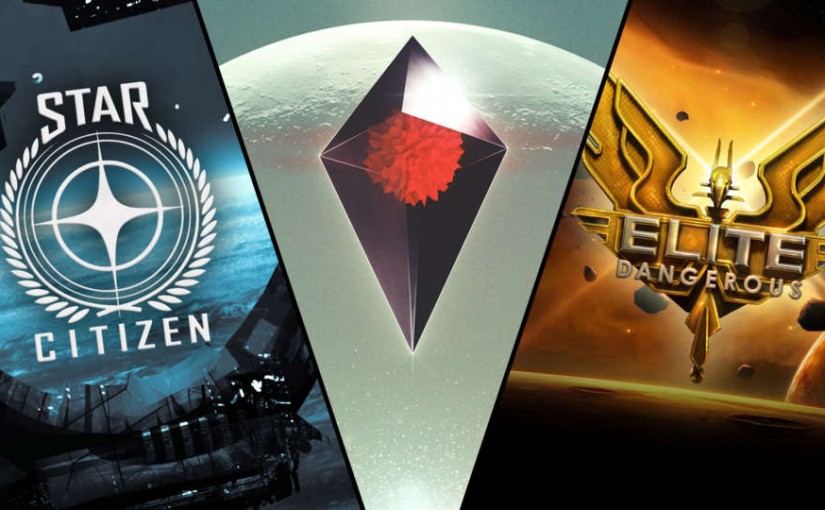If you are into gaming, and space games specifically, you cannot have escaped the tumult that’s surrounding Star Citizen, probably the largest crowd-funded games to date. Questions have risen whether Roberts Space Industries can deliver on the promise of a Utopian sandbox space game, the pinnacle of which was delivered through a much debated article by The Escapist.
As an Agile Coach I’ve watched this unfold through a different set of eyes, and I want to share some insights on how some of this could have been prevented.
First and foremost, I am not posting this to criticize Chris Roberts even further. I actually have some money riding on Star Citizen (which I won’t withdraw in the hopes that it will come to something). I merely want to point out some observations I have made and relate them to the Agile principles.
Before we go into my observations it’s good to recap some history.
When Chris Roberts started his Kickstarter campaign back in 2012 he promised an epic new space game, reminiscent of the old Wing Commander and Star Lancer series. His vision was truly epic and being an established game developer he got immense backing from many folks that hungered for the same. At the end of the Kickstarter campaign he managed to get $2.1 million and it didn’t stop there. After that campaign ended he continued to get support and offered special ships for additional backing. The grand total accumulated funds for this project exceeds $90 million.
The mood around Star Citizen seemed to take a nose dive after the first delivery deadline got pushed back from 2015 to 2016. People started wondering if the game would in fact ever be delivered. Looking how much money was poured into this project it’s not strange people started to get really uneasy. The little trickle of concern turned into a stream, then into a river and is now a torrent.
For me this seems typical of a big bang delivery of any product. Traditional projects often face such delays, failing to deliver the value promised or lose support because of results that fail to materialize. There’s still a hard-core group that will support it, mostly due to there level of buy-in, so backing out would feel like taking a loss.
People have invested cash into this concept, but have not seen much of it. There has been a hangar module, a dog-fighting module and a racing module delivered, but it lacks all the grandness of what was promised.
Agile values visibility and working software in product development. Every iteration something tangible and valuable is delivered to its users. It might or might not be shipped right away, but should always be shippable. This approach has several advantages.
First of all, consumers can see what they paid for, touch it, get experience and give feedback that will help improve your product. There would be far less concern on progress, how their money is put to work and have a feel for what is about to come. Now they have very little.
The other things you should wonder about is this: what if funds would dry out today, what would be there to show for it? Right now, all that is done are those modules I mentioned before; nothing of the original game concept would be there.
Building stuff incrementally means that when the plug is pulled there is something that is usable and fits the vision of the game better. It might not be as shiny or feature-rich as envisioned, but you’d have something usable. Even more so, you could have decided to release earlier and get a more reliable income for further development; not on promises made, but features delivered.
It seems with the complexity of games it’s hard to deliver fast and frequent, but there are some examples out there that prove otherwise.
Elite: Dangerous is a similar game to Star Citizen that took a different approach. They managed to get something workable out earlier. The result was a game that was perhaps not exactly finished, but shippable, giving a firm base for further development, customer feedback and (more importantly) income. It is currently working on some features like promised in Star Citizen (multi-player crewed ships, planetary interaction), except they are far more likely to deliver.
Another company that really understands and embraces this concept is CCP, developer of Eve Online. They started doing incremental updates every 4 weeks instead of 6 months about a year ago. This did not only result in a much more stable product (less down time, less bugs), they also managed to gather more feedback from their customers and sometimes learn they didn’t achieve their goal with a new concept and take it out. They’ve recently announced they will package larger releases for features that only deliver value combined, rather than separate, based on the experiences of their customers. Game development doesn’t get much more agile than that.
To come to a conclusion of this analysis, Chris Roberts might have saved himself a lot of headache (and time spent on newsletters) if he would have chosen an Agile approach over traditional project management. I am certain that he would not face as much scrutiny from both backers and press and might in fact already have been able to monetize on his dream, so that he could further finance its development.
